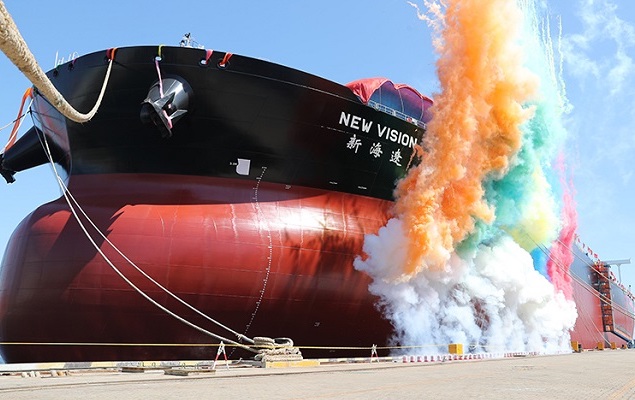Maxed out: VLCC and suezmax utilisation forecast to hit close to 100% by 2025

The VLCC bulls are on parade with a host of data points pointing towards an extended boom period.
A new report from Kepler Cheuvreux forecasts VLCC utilisation will hit an unprecedented 99% by 2025 thanks in large part to a very low orderbook. The Kepler Cheuvreux forecast sees annual average VLCC rates hitting $54,650 this year, and steadily rising for the coming couple of years to hit a hugely profitable $87,500 by 2025, whereby a VLCC would be raking in profits of around $70,000 every day.

Similarly, Kepler Cheuvreux sees suezmax utilisation heading into unchartered territory, hitting above 98% by 2025.

Pareto Securities maintains rates for VLCCs are on course to crack the $100,000 mark by Q4 this year, describing an “underlying market that just keeps looking better” in a note to clients yesterday.
Yesterday tanker giant Euronav posted its best-ever Q2 operating performance outside the covid-related market spike of 2020.
The Belgian shipping firm pointed out that the orderbook-to-fleet ratios remain extraordinarily low by historical standards at just 1.6% for VLCCs.
Euronav also observed that the last period during which Q2 freight rates were sustainably above $40,000 per day for both VLCC and suezmax sectors was in 2003 to 2008, widely acknowledged as shipping’s greatest earnings period ever.
“Core industry fundamentals are similar today. In 2023, the global fleet average age is 11 years for VLCCs (vs. 8.2 years in 2003) and 11.1 years in 2023 for Suezmax (vs. 8.4 years in 2003). Then as now, owners faced incoming regulations requiring longer-term fleet adjustments, with the move from single- to double-hull vessels in 2003,” Euronav noted.
Analysts at Jefferies also discussed the tanker sector’s significantly tighter balance in a recent note to clients.
“The tanker fleet is set to grow (pre-scrapping) by 0.9% in 2024 and by 1.8% in 2025, both below our trade growth forecasts and leading to further tightening of the supply/demand balance,” Jefferies suggested.
“A historically low orderbook combined with favourable demand fundamentals should continue to support increased spot rate volatility, which combined with the ongoing geopolitical turmoil, should support freight rates in the medium term,” Breakwave Advisors argued in a report published this week.

I was in Single Hull VLCC before double hull came in
An old Chief Mate I find your posts interesting. Wherever the technology advanced basic tanker practice remains unchanged and continuous revalidation and revaluation of ships staff is utmost. Tanker practice and training is necessary for the young blood